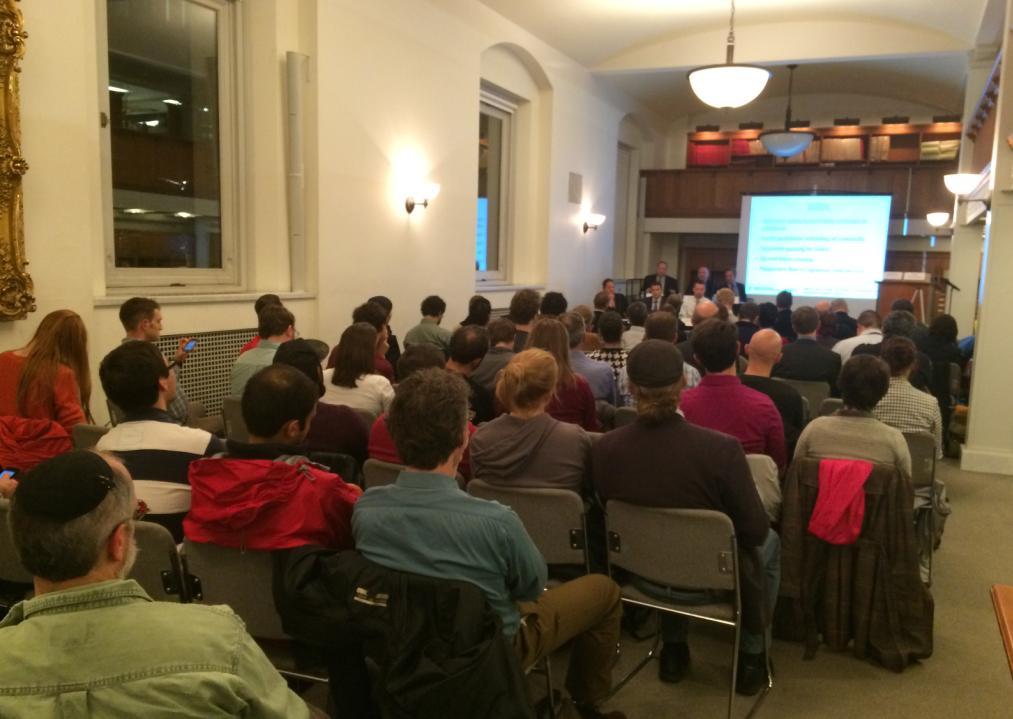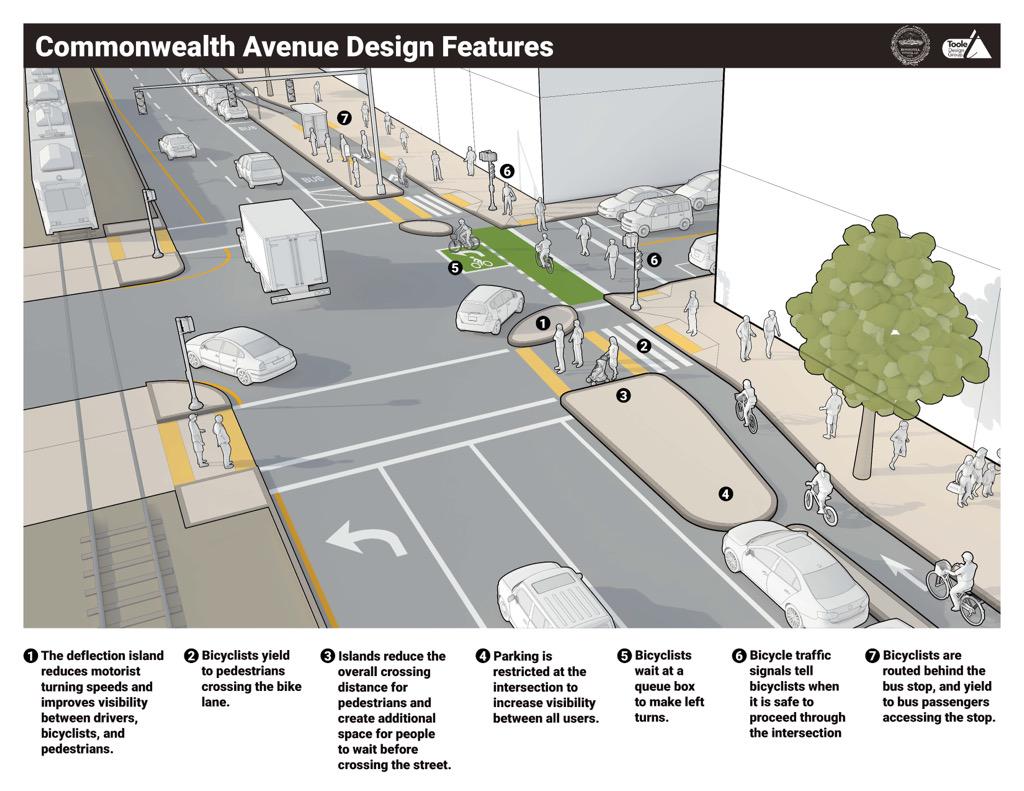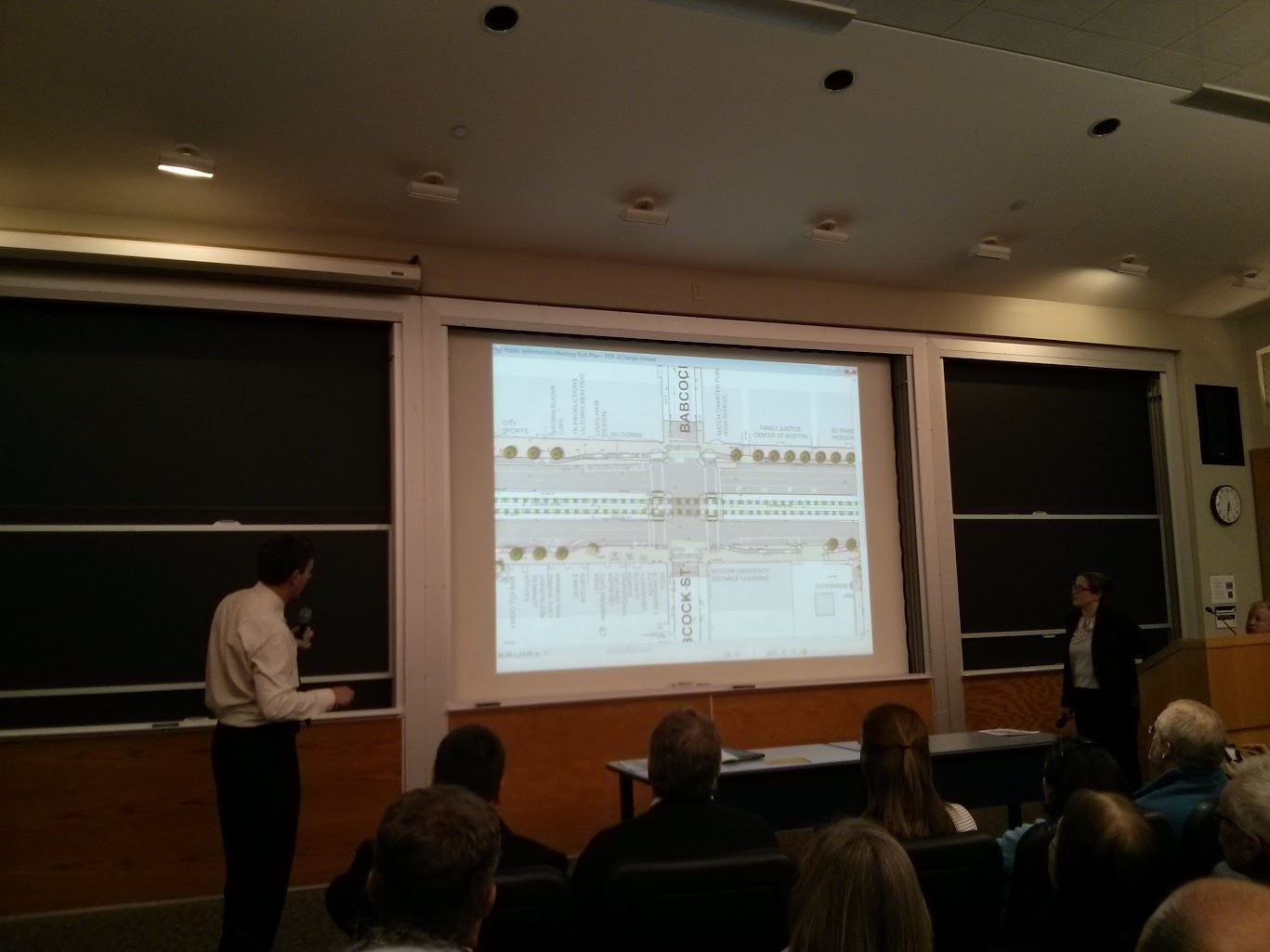Glad to hear that you've had a chance to take a look at the BU Transportation Master Plan. It's a very interesting document. And yes, it's true that traffic levels are also declining, something that I neglected to point out earlier.
What's curious about the BU Transportation Master Plan is that its findings and philosophy is not reflected in the Comm Ave Phase 2A 25% Design that was supposedly funded by BU. It's possible that the Master Plan and the 25% Design were not coordinated -- I believe that the Master Plan was published after the 25% Design was originally proposed, in fact.
The Phase 2A 25% Design seems to reflect thinking circa-2008 or so, where the biggest perceived problem with Comm Ave was aesthetics and the solution was the creation of those street planting zones that you see between Kenmore and the BU Bridge. It fixes up some long-standing problems with the intersections (lack of dedicated left turn lanes) and adds a bunch of trees. Bike lanes were tossed in as an update. Sidewalks were narrowed to fit in the changes, but "enough" was left over, or so they thought.
A lot of thinking has changed in the last few years, especially on the part of the city. Last year I attended the release of the Boston Complete Streets guidelines and then-Commissioner Tinlin stood up and said (paraphrasing): "5 years ago there is no way I would ever be doing anything like this, and now it seems inevitable."
So I appreciate that the BU Transportation Master Plan calls for fixing a lot of the remaining pedestrian issues along the corridor. However, Phase 2A 25% (and 75%) Design does not meet that calling, in my view, and in the view of many other people I have spoken with. And, both known Phase 2A designs fall far, far short of where bicycle facility planning should be in 2014. And neither incorporates the MBTA's long-awaited plans for station consolidation.
Regarding mid-block crossing, I know that the BU Transportation Master Plan does not really deal with it, which I believe is a failing of the plan. Most of the impetus for mid-block crossing is coming not from BU, but from the surrounding neighborhood. For example, I know that there will be a sizable contingent of local residents interested in a Naples Road crosswalk because of the presence of the supermarket.
I'm aware of the engineering issues surrounding the addition of crosswalks, but I think that they can be considered case-by-case and resolved. The Green Line is not an obstacle: that claim is rather absurd, actually, since streetcars have successfully mixed with people ever since the systems were invented in the 19th century, and continue to do so today in many places around the world. It's only relatively recently that certain people in Boston have come to fear the train, probably because they mistakenly associate it in their minds with heavy commuter rail trains that are indeed dangerous.
Furthermore, there is a de facto crossing of the Green Line at Naples Road already, and it has existed since the beginning. Hundreds of people (maybe more) use it every day -- just come and watch sometime. It's abundantly clear that there is no actual safety problem here with crossing the tracks (except for, of course, accessibility). The real danger comes from speeding motor vehicles, not from the Green Line trains. Therefore the engineering will need to focus on making the crosswalk safe by calming the street, and figuring out how to put in safe, accessible crosswalk ramps.
At the same, you keep separating out cars versus buses in all of your arguments. Either buses use the travel lanes or they don't. Which one is it?
Buses travel in a different manner than private cars, typically. The 57 bus averages about 10 mph in this stretch, stopping every couple blocks. Top speed is not so relevant: what really matters is how easy or hard it is for the bus to stop and board/alight passengers. The 57 bus received station consolidation in 2013 due to the key bus improvement project, which was a great help. Now it needs curb extensions so that stopping and starting time is minimized, and so that boarding and alighting onto a proper curb is made easiest. Furthermore, it is Complete Streets policy for every bus stop to be adjacent to a crosswalk: but some of the new bus stops have been moved away from existing crosswalks and could benefit from new, mid-block crosswalks.
The engineering of the bus stops in Phase 2A, and associated mid-block crosswalks, requires consideration of all the elements of the street together. For example, if an off-street cycle-track option is selected for the bicycle facilities, then the curb extensions for the bus stop should be planned in conjunction with the cycle-track in order to assure that the bus passengers have plenty of room to be clear of the cycle-track. This kind of design is quite common with sidewalk-level cycle-tracks in other places, but it needs coordination between different agencies in order to make it work here -- coordination that should be normal and commonplace, but sadly sometimes is not.







